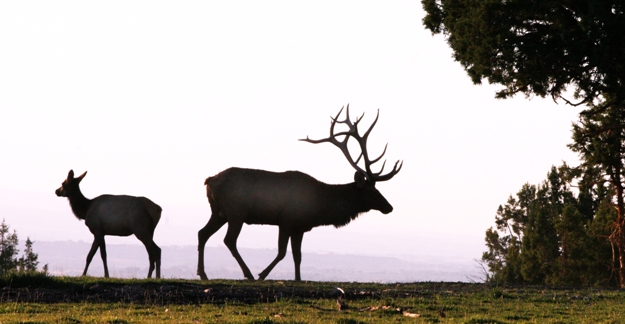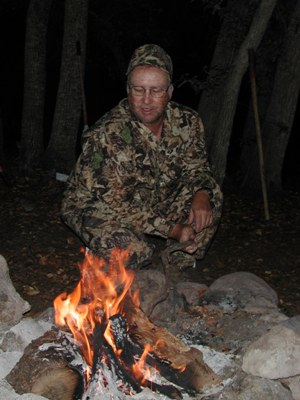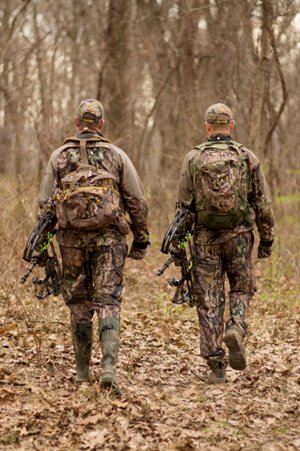
After taking an elk on a do-it-yourself elk hunt, the major concern is getting the meat back to the trailhead where you have your truck parked. After we have harvested the elk, we plan to get up early the morning and debone the meat. We usually can leave almost everything in our packs at our camp. Then we’ll plan to make two trips each to get the elk out. If we harvest the elk 2 miles from camp, we’ll fill up our packs with deboned elk meat and start walking out to the truck. We’ll usually have two ice chests in the back of our truck. One will be filled to the top with ice, and the other ice chest will be empty. We’ll take a portion of the ice out of the full ice chest and use it in the ice chest that doesn’t have any ice. We’ll load our meat out of our packs and into one ice chest. Then we’ll hike back in to the place where we’ve left the meat, load up our packs, make another trip back to our truck and pack our meat in the ice chests. More than likely, we’ll sleep in the truck, get up the next morning, hike back to camp and get all our camping gear – leftover food, tents, sleeping bags and other equipment - and carry it back to the truck.
 I always carry my elk meat back to my house, cut it up and process it there. I've always cut, wrapped and packaged any animal that I’ve harvested, except when I drew a once-in-a-lifetime moose tag. When I looked at that moose lying on the ground, I realized he was much bigger than the elk I was accustomed to processing. So, I decided to have him processed at the closest processor to where I had taken him.
I always carry my elk meat back to my house, cut it up and process it there. I've always cut, wrapped and packaged any animal that I’ve harvested, except when I drew a once-in-a-lifetime moose tag. When I looked at that moose lying on the ground, I realized he was much bigger than the elk I was accustomed to processing. So, I decided to have him processed at the closest processor to where I had taken him.
I think one of the mistakes that most do-it-yourself elk hunters make, especially on their first hunts, is that they fail to leave themselves enough hunting time to pack in 4 miles before they start hunting, and they rarely leave themselves enough time to process their elk and pack them out. A do-it-yourself elk hunt requires much more time and planning than when you go with an outfitter who has guides, horses and wranglers to help you get the elk out of the woods and have it processed and prepared for you to take home. My family and I really enjoy elk meat. That’s why I like to drive my vehicle to where I’m going to hunt and take my ice chest. Then, I know I can get my meat back home and process it at my home where I have all my equipment. Yes, you have to spend more time, and you have to put in more hours before, during and after the hunt than you usually spend on a guided elk hunt.
I'm really looking forward to this Wyoming hunt, because I’ll see new territory, and I’ll get to test my hunting skills on new terrain and with elk that I've never hunted before. This should be a great adventure. I think this is the way you have to look at a do-it-yourself elk hunt, which generally is an elk hunt of a lifetime for many people. If you plan carefully and correctly, you can be highly successful.
Day 4: The Elk’s Down - Now What



























